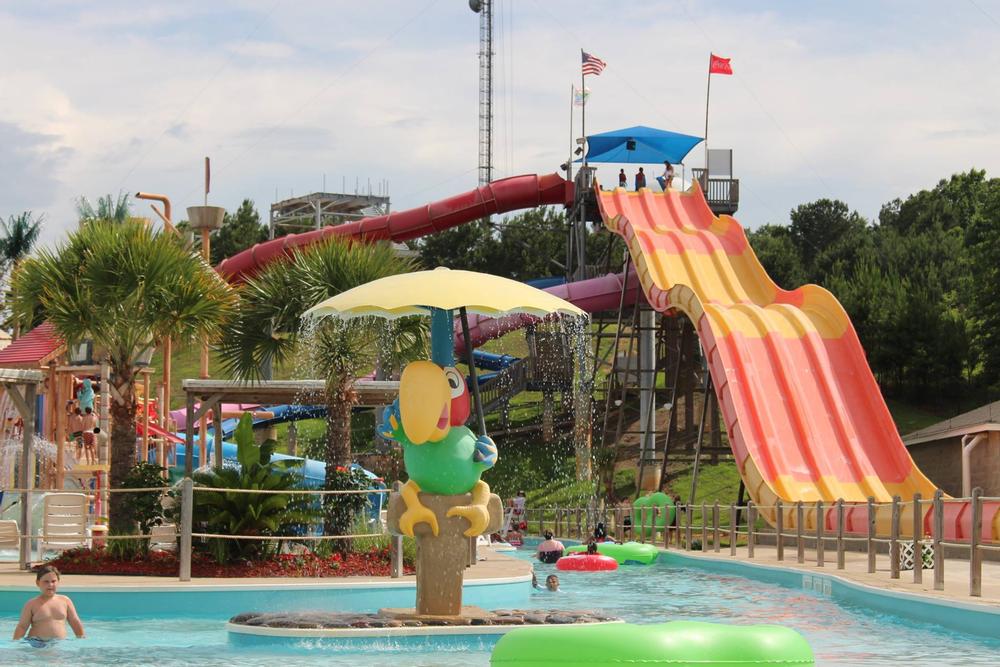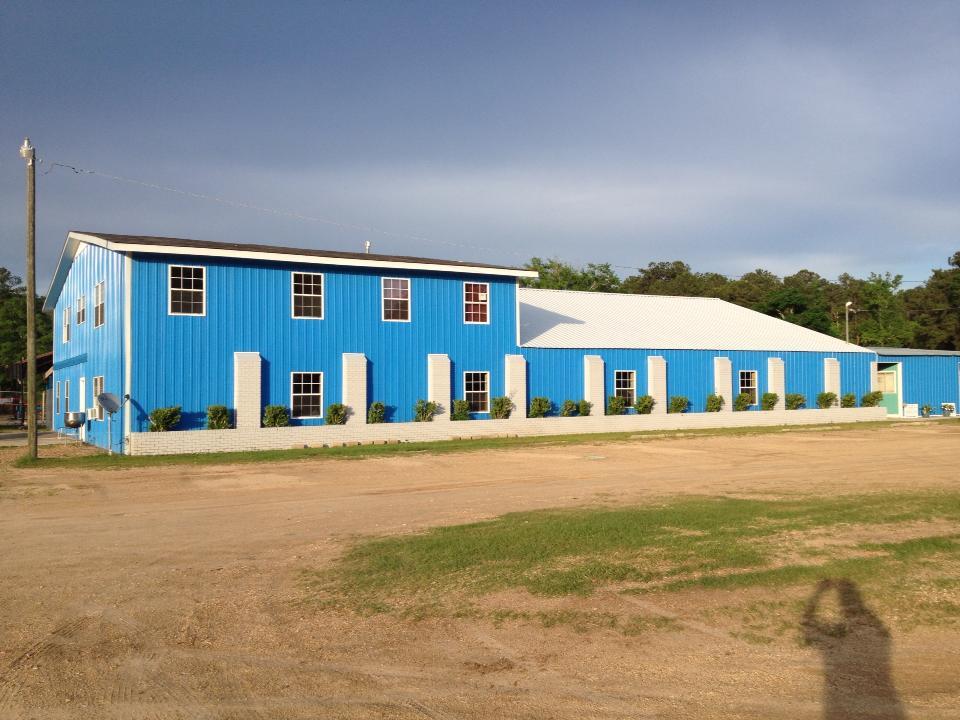1. Geyser Falls Water Theme Park

Situated in the town of Choctaw, the Geyser Falls Water Theme Park, the massive family water park spans across twenty-three acres, offering a wide variety of amusement, including twelve water slides, a large wave pool, activity areas for kids, a lazy river, and a number of swimming pools. Across the nearly two dozen acres are several acres of sandy white beaches, glistening water, and palm trees. There is also an outdoor stage that sometimes features entertainment, a snack bar, an ice cream parlor, a food court, a retail shop, and a birthday hut and cabanas available for rental.
209 Black Jack Rd, Choctaw, MS 39350, Phone: 601-389-3100
2. Grand Paradise Waterpark

The Grand Paradise Waterpark is located in Collins, Mississippi, and packed full of plenty of water-filled fun for guests of all ages. The wild and wet amusement park encompasses seven acres and includes a variety of attractions, such as the Waddleland Splashpad, Blue Typhoon, and Tropical Splash. The Wipe Out and Grand Falls Racer will delight any enthusiast of water slides, while the FreeFALL and AquaTWIST are loads of fun for all thrill seekers. For those who want a more relaxing water park experience, floating along the Paradise River is a great option. The park also has covered facilities for group.
50 Grandview Dr, Collins, MS 39428, Phone: 601-765-8118
3. Gulf Islands Waterpark

The Gulf Islands Waterpark, situated in the town of Gulfport in Mississippi, offers hours of family fun with attractions for guests of any age, including a lazy river, water slides, and a splash zone area designed specifically for small children. There are miles of water slides, such as the Cat Island Catapult, Ship Island Wreck, Camille Cutter, and Horn Island Blaster. Younger guests can find plenty of kid-friendly attractions, and visitors can grab a bit at the Petit Bois Island Cafe. Lockers and cabanas can be rented at the water park for a fee, but parking, tubes, and life jackets are free.
17200 16th St, Gulfport, MS 39503, Phone: 228-328-1266
Fun Mississippi Waterparks:
4. Pep's Point Water Park

Pep's Point Water Park is located in the city of Hattiesburg, in the small Eatonville community. Open during the summer months of May through September, the water park is family-owned and operated, and has been run for more than twenty years by the same family. The park consists of a spring-fed lake along with a relaxing sandy beach. Activities in the family water park include tubing, paddle boats, canoes, swimming, a water playground, and three types of slides. There are also picnic areas in the park that contain grills, as well as a miniature golf course, volleyball court, basketball court, and a game room.
382 Peps Point Rd, Hattiesburg, MS 39401, Phone: 601-582-8461
5. Buccaneer Bay

Pirate lovers will have a blast splashing around at Buccaneer Bay. This pirate-themed waterpark stands on a massive 4.5 acres and is filled with fun, unique water attractions. Parkgoers can go on multiple exciting waterslides like the Pirate’s Plank and Pirate’s Plunge and swim through eight different wave patterns in the Pirate's Lagoon Wave Pool, to name a few. Toddlers and little children also have a safe, designated kiddie pool in the Lil’ Smuggler’s Cove. The park also features a 10,000-square-foot sun deck where guests are welcome to lounge about and relax by the pool. Delicious pizzas, hamburgers, nachos, alongside other food and drinks may be purchased at the Sea Dog Galley food court.
1150 South Beach Boulevard, Waveland, Mississippi 39576, Phone: 228-467-3822
6. Jellystone Park Pelahatchie - Yogi On The Lake

Located just about half an hour from the state capital, families can find the perfect vacation spot at Yogi on the Lake in Jellystone Park Pelahatchie. The park offers a wide array of recreational activities and accommodation options to suit every need. Fill up the day with activities like fishing, miniature golf, picnicking, and splashing around the different water attractions. Families can camp out in any of the park’s fully equipped tent and RV campsites or book a private wooden cabin by the water. Several cabin types are available from Sleeper Boo Boo cabins, which can accommodate groups of 6, to the Lakeside Lodge, which sleeps groups of 12.
143 Campground Rd, Pelahatchie, MS 39145, Phone: 228-467-3822
Plan Your Trip


